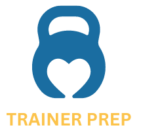I’ve noticed many aspiring personal trainers ask, “Is the NASM Test hard?” If you’re one of them, you’re not alone. The NASM test is known for its rigorous content and comprehensive coverage of exercise science principles. You’ve probably heard that only about 65% of candidates pass on their first try, making it crucial to be well-prepared.
Based on our team’s expertise, we’ve put together a thorough guide to help you tackle this challenge. In this article, we’ll cover:
- Why some people find the NASM test hard
- Key topics and structure of the exam
- Effective study tips and common mistakes to avoid
- What Is the NASM Test?
- What Are the Main Topics Covered in the NASM Test?
- How Is the NASM Test Structured?
- Why Do Some People Find the NASM Test Hard?
- Study Tips to Pass the NASM Test
- Common Mistakes to Avoid When Preparing for the NASM Test
- Resources to Help You Prepare for the NASM Test
- What Happens if You Fail the NASM Test?
- Conclusion
What Is the NASM Test?
The NASM test, also known as the NASM Certified Personal Trainer (CPT) exam, is a highly respected certification offered by the National Academy of Sports Medicine (NASM). As a leader in fitness education, NASM aims to equip personal trainers with the knowledge and skills necessary to excel in their careers.
Purpose and Importance
Becoming certified through NASM demonstrates your competence in exercise science and human performance. This certification is crucial for personal trainers who wish to validate their expertise and expand their career opportunities. Many employers in the fitness industry prefer or even require NASM certification due to its rigorous standards.
Structure of the Exam
The NASM CPT exam consists of 120 questions and is conducted in a multiple-choice format. Of these questions, only 100 are scored, while 20 are pre-test questions that do not count towards your final score. Test-takers have 2 hours to complete the exam, and a score of 70% or higher is required to pass.
Key Domains
The exam covers six primary domains:
- Basic and Applied Sciences and Nutritional Concepts (17%)
- Assessment (18%)
- Program Design (21%)
- Exercise Technique and Training Instruction (22%)
- Client Relations and Behavioral Coaching (12%)
- Professional Development and Responsibility (10%)
These domains encompass the breadth of knowledge needed to succeed as a personal trainer, ranging from foundational scientific principles to client interaction and ethical practices.
What Are the Main Topics Covered in the NASM Test?
Understanding the main topics covered in the NASM test will help you prepare effectively. The test is designed to assess your comprehensive knowledge of personal training practices and principles.
Basic and Applied Sciences and Nutritional Concepts
This section covers:
- Human Anatomy and Physiology: Knowledge of the musculoskeletal, cardiovascular, and respiratory systems.
- Nutritional Science: Understanding macronutrients, micronutrients, and their impacts on health and performance.
Assessment
You need to be proficient in:
- Fitness Assessments: This includes postural analysis, strength assessment, and flexibility testing.
- Client Evaluation: Gathering baseline data to develop personalized training programs.
Program Design
Key elements of program design include:
- Periodization: Implementing systematic planning to enhance performance.
- Special Populations: Adapting programs for clients with specific health issues or conditions.
Exercise Technique and Training Instruction
Here, the focus is on:
- Proper Form: Understanding and teaching the correct form for various exercises.
- Safety Protocols: Ensuring client safety during workouts.
Client Relations and Behavioral Coaching
This area emphasizes:
- Communication Skills: Building rapport and motivating clients.
- Behavioral Strategies: Techniques to promote long-term adherence to fitness programs.
Professional Development and Responsibility
This section ensures you understand:
- Ethical Practices: Adhering to professional standards and guidelines.
- Continuing Education: The need for lifelong learning and staying updated with industry advancements.
How Is the NASM Test Structured?
Let’s break down the structure of the NASM test further.
Question Types and Format
The exam features multiple-choice questions, which test your knowledge and problem-solving skills. Each question presents a scenario or a specific piece of exercise science content, followed by four potential answers. Only one answer is correct.
Timing and Scoring
You have 120 minutes to complete the exam, which means you should ideally spend about one minute per question. The passing score is 70%, translating to correctly answering 70 of the 100 scored questions. The 20 non-scored questions are included to gather data and improve future versions of the exam. These questions are indistinguishable from scored questions, so it’s essential to treat every question seriously.
Adaptive Nature and Test Environment
NASM CPT exams are conducted in a proctored environment, either in-person at testing centers or online. The setting is designed to minimize distractions, helping you focus entirely on the test.
Why Do Some People Find the NASM Test Hard?
Many candidates find the NASM test challenging. The reasons for this are varied and can be understood through several key points.
Depth of Content
The exam covers a wide range of topics, from basic anatomy to advanced program design. This breadth of content requires a deep understanding rather than simple memorization.
Practical Knowledge Requirement
The NASM test doesn’t just assess theoretical knowledge. It also evaluates your ability to apply this knowledge in real-world scenarios. For instance, you might be asked to design a fitness program for a client with specific goals and limitations. This requires not just knowing the material, but being able to use it practically.
Analytical Questions
Some questions are analytical, requiring you to think critically about how different concepts interact. For example, you might be asked how a specific nutrient affects muscle recovery, which involves understanding both nutrition and exercise physiology.
High Standards
NASM has high standards for certification, which is why it’s so well-respected. Meeting these standards means passing a challenging test that ensures only qualified trainers receive certification.
Understanding these factors can help you approach your study plan more effectively. By knowing why the test is difficult, you can tailor your preparation to address these challenges directly.
Study Tips to Pass the NASM Test
To increase your chances of passing the NASM test, it’s essential to adopt effective study strategies. Here are some proven tips to help you prepare:
Utilize Recommended Study Materials
1. NASM Essentials of Personal Fitness Training (7th Edition): This textbook is the cornerstone of your studies. It covers all the exam topics in depth, complete with visuals and summaries that aid in understanding.
2. Practice exams: Taking multiple practice tests helps you familiarize yourself with the exam format and identify areas where you need further review.
3. Online study resources: Websites like TrainerPrep offer additional tips and practice questions to supplement your study.
Create a Study Plan
A structured study plan can make a significant difference in your preparation. Break down your study sessions into manageable chunks, focusing on one domain at a time:
- Week 1-2: Basic and Applied Sciences and Nutritional Concepts
- Week 3-4: Assessment and Program Design
- Week 5-6: Exercise Technique and Training Instruction
- Week 7-8: Client Relations, Behavioral Coaching, and Professional Development
Join a Study Group
Studying with others can enhance your understanding. You can discuss complex topics, quiz each other, and offer mutual support. It also introduces different perspectives on the material, enriching your learning experience.
Time Management Techniques
Effective time management ensures you cover all the necessary material without feeling overwhelmed:
- Daily study sessions: Dedicate at least an hour each day to studying.
- Break down tasks: Split larger tasks into smaller, more manageable ones.
- Use a timer: The Pomodoro Technique (25 minutes of focused study followed by a 5-minute break) can enhance productivity.
Common Mistakes to Avoid When Preparing for the NASM Test
Avoiding common mistakes can prevent setbacks in your preparation:
Underestimating the Test
One frequent error is underestimating the complexity of the NASM test. Cramming at the last minute won’t work. Give yourself ample time to study and review.
Not Following a Study Plan
A lack of structure can lead to ineffective studying. Stick to your study plan and allocate specific times for each subject area to ensure comprehensive coverage.
Skipping Practical Applications
The exam tests both theoretical knowledge and practical application. Don’t just memorize facts; practice applying them. Create exercise programs, practice assessments, and think critically about real-world scenarios.
Ignoring Weak Areas
It’s easy to focus on strengths and ignore weaknesses. Identify your weak areas early and spend extra time reinforcing them. Practice exams can help pinpoint these weaker sections.
Focusing Only on the Textbook
While the NASM Essentials textbook is crucial, don’t rely solely on it. Use other study materials, such as flashcards, online resources, and additional practice tests.
Resources to Help You Prepare for the NASM Test
Various resources can aid in your preparation:
Textbooks
- NASM Essentials of Personal Fitness Training (7th Edition): The primary study resource for the exam.
- Secrets of the NASM Personal Trainer Exam by Mometrix: Offers condensed review and practice tests.
Online Courses and Workshops
NASM provides online courses and workshops. These structured learning programs offer interactive experiences, and direct support from instructors can clarify complex topics.
Flashcards
Flashcards are useful for memorizing key terms and concepts. You can find pre-made sets online or create your own tailored to your study needs.
Practice Tests
Take as many practice tests as possible. They help you become familiar with the question format and time constraints, providing a realistic exam experience.
Study Groups and Forums
Join forums or study groups where you can discuss topics, share study tips, and answer practice questions. Engaging with peers enhances learning and keeps you motivated.
What Happens if You Fail the NASM Test?
Failing the NASM test isn’t the end of the road; you have options to retake it:
Retake Policy
- Cost: A retake costs 199.
- Waiting Period: You must wait 7 days for the first retake, 30 days for the second, and a year for subsequent attempts.
Tips for Improving Your Score
1. Analyze Your Performance: Review the areas where you scored poorly and focus your study efforts there.
2. Seek Additional Resources: Use additional textbooks, enroll in workshops, or seek mentorship from experienced trainers.
3. Practice, Practice, Practice: Continue taking practice exams to build confidence and improve your test-taking skills.
4. Stay Positive: A positive mindset can greatly affect your performance. Believe in your ability to improve and succeed.
Conclusion
By understanding the structure and content of the NASM test, adopting effective study strategies, and avoiding common mistakes, you can maximize your chances of passing and obtaining your certification. Remember, thorough preparation is key to overcoming the perceived difficulty of the NASM test. Good luck!

